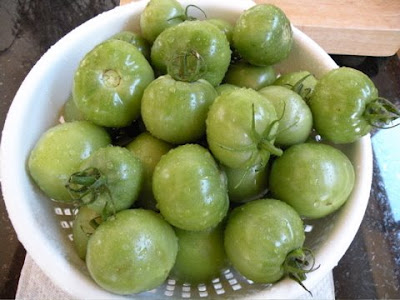
In January we added what was to be the last hard scape feature in the English garden. David used some of our left over bricks ( purchased for a deal at the Habitat for Humanity store) to create a semicircular edging for a new bed, which echoes the other features of the garden; patio, bird bath and the curved dry stone wall. Circular patio stones replaced the original field stones to complete the theme of circles. A Philippine violet was planted in the center and in no time at all plants were filling in the empty spaces.
 My absence from the garden for two months in the summer was noted by all those opportunistic seeds. The violet was soon completely crowded out by blanket flowers, cone flowers, cosmos and all manner of salvia.
My absence from the garden for two months in the summer was noted by all those opportunistic seeds. The violet was soon completely crowded out by blanket flowers, cone flowers, cosmos and all manner of salvia. Spring is always a riotous mix of California poppies, larkspur and blanket flowers but this year the pink poppies were outstanding.
Spring is always a riotous mix of California poppies, larkspur and blanket flowers but this year the pink poppies were outstanding. In the spring I made my debut in the world of garden blogging. Introduced by Pam, of Digging, I became well and truly hooked when I gave the Spring Flingers a tour of the Lady Bird Johnson Wildflower Center. The day before, several bloggers had an impromptu tour of my garden. I have to credit blogging with an introduction to many new plants and techniques and a greater acceptance of mishaps in the garden as well as new gardening friends.
In the spring I made my debut in the world of garden blogging. Introduced by Pam, of Digging, I became well and truly hooked when I gave the Spring Flingers a tour of the Lady Bird Johnson Wildflower Center. The day before, several bloggers had an impromptu tour of my garden. I have to credit blogging with an introduction to many new plants and techniques and a greater acceptance of mishaps in the garden as well as new gardening friends. In April we opened our garden for the tremendously successful Master Gardener's Tour. Over 650 visitors strolled through the grounds in the space of eight hours. The only photograph I took was one of Skip Richter, the director of the Extension Service, who gave a talk on sustainable gardening practices. I enjoyed the photographs and comments posted by garden bloggers who visited the garden.
In April we opened our garden for the tremendously successful Master Gardener's Tour. Over 650 visitors strolled through the grounds in the space of eight hours. The only photograph I took was one of Skip Richter, the director of the Extension Service, who gave a talk on sustainable gardening practices. I enjoyed the photographs and comments posted by garden bloggers who visited the garden.I have been away from my garden more this year than any other year. A total of four months. Plants became overgrown and, during a two month absence in the summer, the garden became a nature preserve!
In the fall D tackled the job of removing a Vitex, 3 Texas sage and a large Southern wax myrtle from in front of the garage. Pulling out can sometimes take a lot longer than planting!
 The wax myrtle had been damaged in a wind storm in the spring and the vitex was interfering with the driveway. One of the first jobs in the New Year will be to replant the area with zeriscape plants. Now if I could just find a Whale's tongue agave!! I can't wait to get started.
The wax myrtle had been damaged in a wind storm in the spring and the vitex was interfering with the driveway. One of the first jobs in the New Year will be to replant the area with zeriscape plants. Now if I could just find a Whale's tongue agave!! I can't wait to get started. I hope you all had a memorable year in the garden
HAPPY NEW YEAR GARDENERS













































































